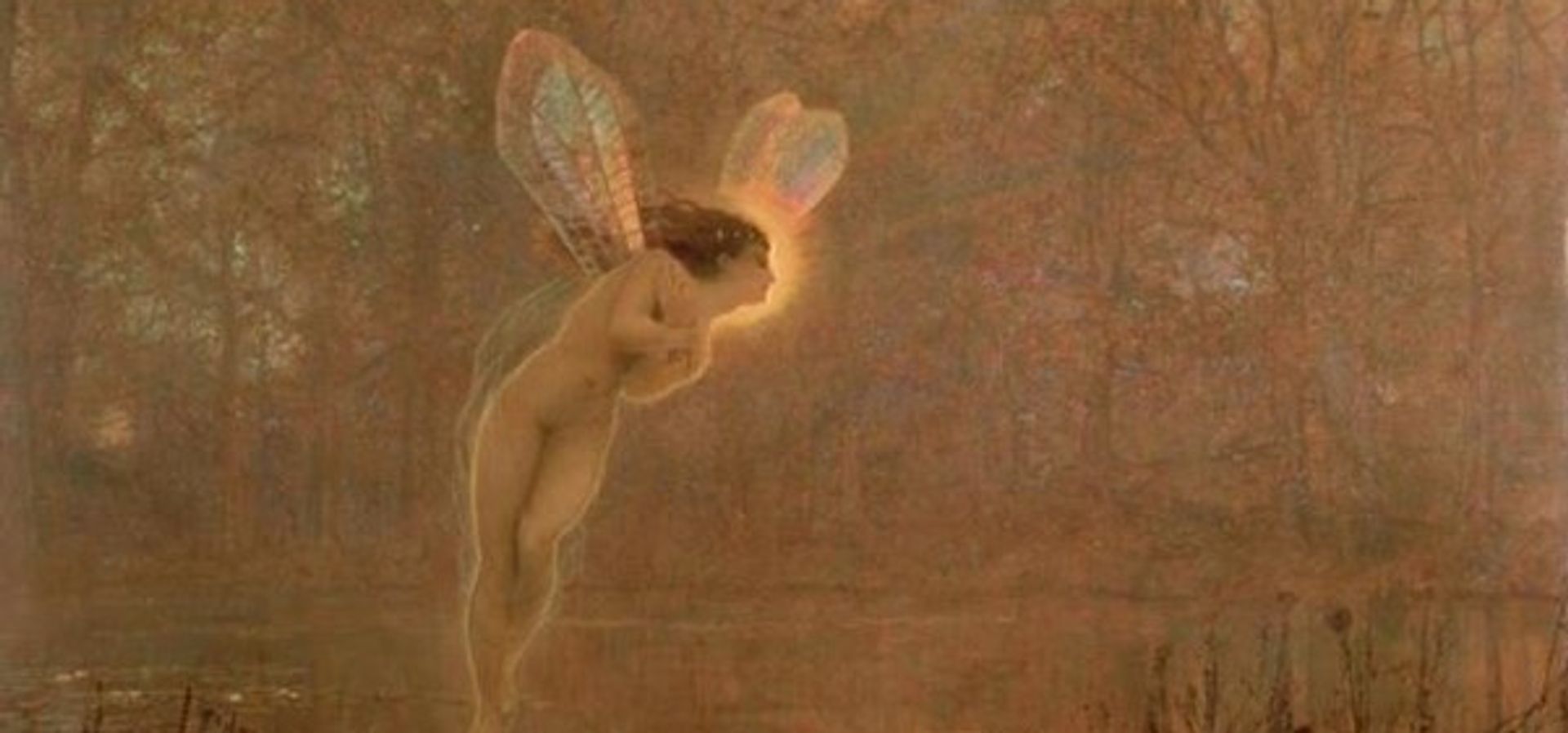
‘Iris’ (1886) by John Atkinson Grimshaw
Local historian Eveleigh Bradford explores one of Atkinson Grimshaw’s most entrancing paintings, which chimes well with the theme of Fairy Tales and Fantasy, the subject of the new exhibition at Abbey House.
Who is Iris?
People love to believe that the graceful figure hovering on her magical iridescent wings is a fairy – she’s even called that on the postcard produced by the Gallery itself – but the artist himself tells another story.
On the back of the picture he wrote this quotation, from an ‘Old Book’: ‘Now Iris being chief messenger unto/ Juno was sent on her Autumn errand to wither ye flowers and leaves/ On coming atte ye Water Lily, being/ enamoured ye beauty thereof, She/ did hesitate/ and was changed into a rainbow for her disobedience’.
The painting is a serious classical subject then rather than a frivolous fairy story; a good excuse for painting a beautiful young nude, who could respectably grace the walls of any businessman’s mansion.

The Painting's Journey
Grimshaw painted this picture in 1886 when he was 50 years old, though a few earlier versions exist. The picture was exhibited at the Royal Academy that year, the last time his work was shown there. It came into the possession of a certain Walter Battle – a Leeds financier and local councillor – who owned a large collection of Grimshaw’s pictures, many of them probably acquired in lieu of payment of Grimshaw’s ongoing debts, which dogged him up to his death in 1893.
An Enchanting Piece
‘Iris’ is a showpiece for Grimshaw’s skills, in its glowing kaleidoscopic colour effects and rich autumnal tones, as well as the mystery and grace of the central figure. Haloed in brilliant gold, the figure curves as if in a rainbow arc, revealed through the sheerest drapery, yet modestly shielded by her arms. The model was probably Grimshaw’s young assistant, Agnes Leefe, who was to die of tuberculosis just four years after this painting. The picture captures the autumn mood, a favourite of Grimshaw’s: golden light, bare trees, soft mists, glimmering reflections, all providing mystery and scope for the imagination.
Finding a Home
In 1897, four years after Grimshaw’s death, the first curator of the new Leeds City Art Gallery, George Birkett, invited loans for a retrospective exhibition of his work alongside three other artists. Walter Battle lent a large number of pictures, including ‘Iris’. Birkett fell in love with it and later that year, in spite of lack of funds, he bought the picture for the Gallery. In the Gallery catalogue he calls it ‘a characteristic specimen of the artist’s best work – strongly individual and unlike that of any other artist….’Iris’ is perhaps in every way his masterpiece’.
By Eveleigh Bradford, Local Historian
